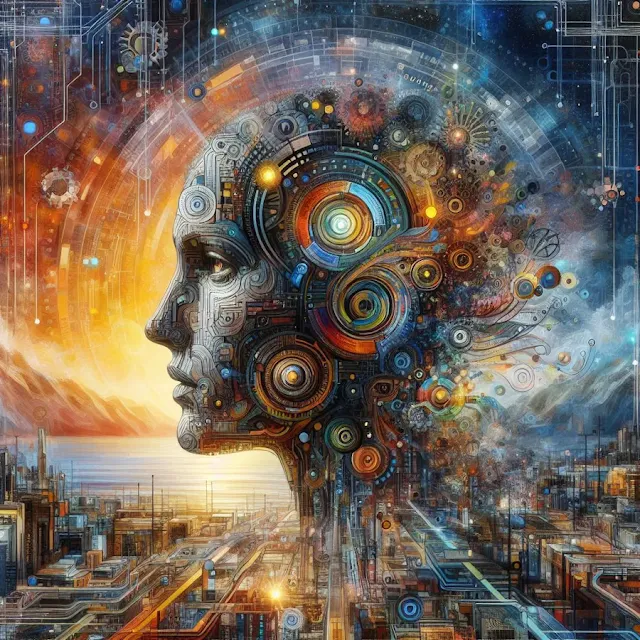Generative AI: Text Generators, Art Creators, and the Rise of Creative AI Tools
Introduction
Understanding Generative AI
Text Generators: Crafting Words with AI
Natural Language Processing (NLP)
Examples of Text Generators
AI in Content Creation
Artistic Endeavors: AI as the Brush
Generative Adversarial Networks (GANs)
Notable AI Art Creators
The Intersection of AI and Traditional Art
Beyond Text and Art: AI's Creative Expansions
Music Composition
Video Game Design
Innovative AI Applications
Challenges and Ethical Considerations
The Future of Generative AI
Conclusion
Introduction
In the realm of technological advancements, one term that consistently makes waves is "AI" – Artificial Intelligence. As we navigate the digital landscape, AI has not only proven to be a powerful tool in various industries but has also emerged as a creative force, giving birth to generative AI. This blog explores the fascinating world of generative AI, with a focus on text generators, art creators, and the broader rise of creative AI tools.
Understanding Generative AI
Generative AI refers to systems that use machine learning algorithms to create new content, whether it be in the form of text, images, or other media. Unlike traditional programming, generative AI relies on data to learn patterns and generate content autonomously. This ability has led to breakthroughs in multiple creative domains.
Text Generators: Crafting Words with AI
Natural Language Processing (NLP)
Text generators, powered by Natural Language Processing (NLP), are at the forefront of generative AI. These systems analyze and understand human language, enabling them to produce coherent and contextually relevant text. From chatbots to content creation, NLP-driven text generators are transforming the way we interact with written information.
Examples of Text Generators
Prominent examples of text generators include OpenAI's GPT-3 and its predecessors. These models can generate human-like text based on given prompts, making them versatile tools for content creation, coding assistance, and even creative writing.
AI in Content Creation
As AI becomes more adept at understanding context and user intent, content creators are leveraging text generators to streamline their workflows. The integration of AI in content creation not only improves efficiency but also opens up new possibilities for innovative storytelling and communication.
Artistic Endeavors: AI as the Brush
Generative Adversarial Networks (GANs)
Art creation through AI often involves Generative Adversarial Networks (GANs), a class of algorithms where two neural networks – a generator and a discriminator – work in tandem. GANs have been instrumental in generating realistic images, blurring the lines between AI-generated art and traditional artistic expressions.
Notable AI Art Creators
AI artists like AIVA and DALL-E have gained attention for producing compelling pieces across various mediums. AIVA composes classical music, while DALL-E generates unique and surreal images based on textual descriptions. These AI-driven creations challenge our perception of creativity and the role of the artist.
The Intersection of AI and Traditional Art
The collaboration between AI and traditional artists has resulted in groundbreaking projects, where the human touch merges seamlessly with the computational precision of AI. This intersection sparks debates about authorship, creativity, and the evolving nature of art in the digital age.
Beyond Text and Art: AI's Creative Expansions
Music Composition
AI is making waves in the music industry by composing original pieces that evoke emotions and resonate with listeners. Systems like Google's Magenta use machine learning to understand musical patterns and create compositions that push the boundaries of what was once thought possible.
Video Game Design
The gaming landscape is also experiencing a revolution with AI-powered game design. Procedural content generation, driven by AI algorithms, allows for the creation of expansive and dynamic game worlds. This not only enhances the gaming experience but also reduces development time and costs.
Innovative AI Applications
Beyond traditional creative domains, AI is finding applications in unexpected places. From generating recipes to designing 3D models, the scope of generative AI continues to expand, offering novel solutions to age-old problems.
Challenges and Ethical Considerations
As we embrace the possibilities of generative AI, it's crucial to address the challenges and ethical concerns that accompany this technological evolution. Issues such as bias in AI-generated content, potential job displacement, and the ethical use of AI in various contexts need careful consideration to ensure a responsible and inclusive future.
The Future of Generative AI
The trajectory of generative AI points toward a future where creative collaboration between humans and machines becomes the norm. As AI algorithms become more sophisticated and ethical considerations are prioritized, the creative landscape is poised for unprecedented innovation and exploration.
Conclusion
In the age of generative AI, where algorithms create art, compose music, and craft text, the lines between human and machine creativity blur. The journey of AI from a tool of automation to a collaborator in the creative process signifies a paradigm shift in how we approach innovation. Embracing the potential of AI while navigating its challenges will be key to unlocking a future where technology enhances our creative capacities rather than overshadowing them. The rise of generative AI marks a new chapter in the ongoing story of human ingenuity, where the fusion of art and algorithms propels us into uncharted creative territories.

